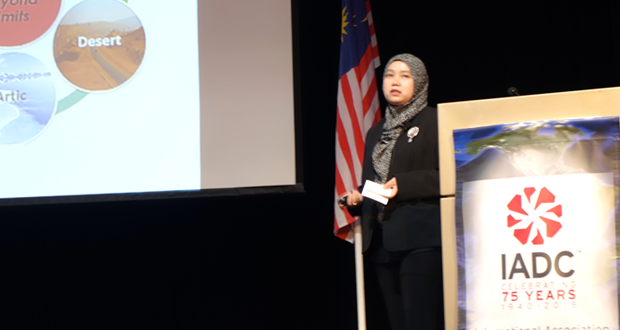Petronas’ INSTEP training institute plans improvements for integrated, experiential learning

By Astrid Wynne, Contributing Editor

Institut Teknologi Petronas (INSTEP) takes realism seriously when it comes to experiential learning – seriously enough to be planning the addition of onsite living quarters and wellhead training facilities alongside the DS20 Drilling Simulator, arriving in 2015. “We will provide accommodation to provide a real situation. So people attending this coming October will be living there, and the system will be connected to the rig. We intend to provide a real simulation,” Azmee Osman, Head of Technical & Operation Division at INSTEP – a technical training provider owned by Petronas – said at the 2015 IADC HSE&T Asia Pacific Conference on 12 March.
The addition of the new facilities is expected to further the experiential learning capacity already in place through the 750-hp land rig NAGA 100 and DS600 simulator that the institute accesses via a collaboration with UMW, the UMW-INSTEP Drilling Academy (UIDA), Mr Osman said. Further, the institute is looking to broaden the range of its training courses this year, including the addition of an IADC-certified well control training course.
INSTEP, which offers upstream and downstream courses, trains diploma holders in the engineering and technical fields in a wide range of core competencies. Technical professionals for the drilling industry are trained in partnership with UMW at UIDA. The system is intended to provide recruits with a clear path upward, from floorman ultimately to professional driller to run and manage rig operations.
Afizza Anis Abdul Rahman, Technical Coach, Wells Department at Petronas Carigali, noted that the competency component of training at INSTEP was built to align with that of University Teknologi Petronas (UTP). UTP offers an MSc in drilling that produces professional drilling engineers to design and manage well construction and well servicing. For both engineering and rig operations training, diverse cultures, the evolution of technology and generational gaps in the workforce underline the need for accelerating competency development.
“There is a big gap between the Generations Y’s and the Baby Boomers, and we need a development project to deal with that,” Ms Abdul Rahman said.
“It doesn’t matter if you have state-of-the-art facilities if you don’t have the right people,” she explained, describing the match between technical capability and the people component as “horses for courses” that “can’t live without each other.” She explained that the overarching approach of Petronas is to acquire the right equipment for the right people, who are trained and retained through a flexible career ladder, recognition and retention policies, and capability development programs.
Although there is a differentiation between the drilling professional training at INSTEP and the more academic approach of UTP, Ms Abdul Rahman said both sets of training focus on providing a wide base of experience and practical application. Behavioral safety is embedded and continuously reinforced along the way, she emphasized. Overall, competency development takes a four-pronged approach: Classroom training is provided by internal staff, as well as external providers; project attachment offers a work experience component; simulation training is included, as well as hands-on practice that includes offshore exposure and life-like training facilities, such as the rig at UIDA.
UTP ties into the facilities available at UIDA to give their students a truly experiential component to their learning that runs alongside classroom learning. “Things you see and touch stay in your memory longer than things you see and hear,” Ms Abdul Rahman said. “We enhance the training when we link it back to the life-training facilities at INSTEP.”




